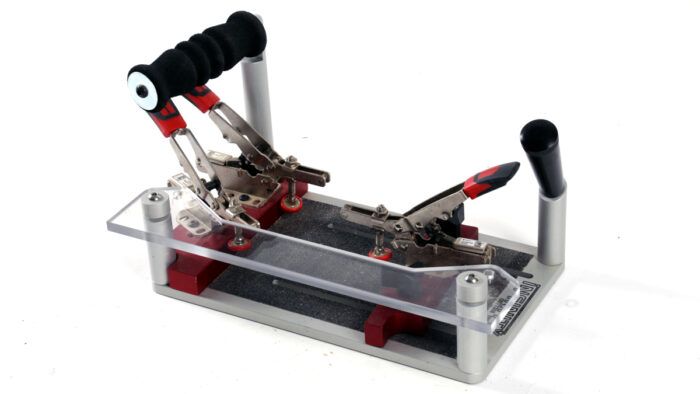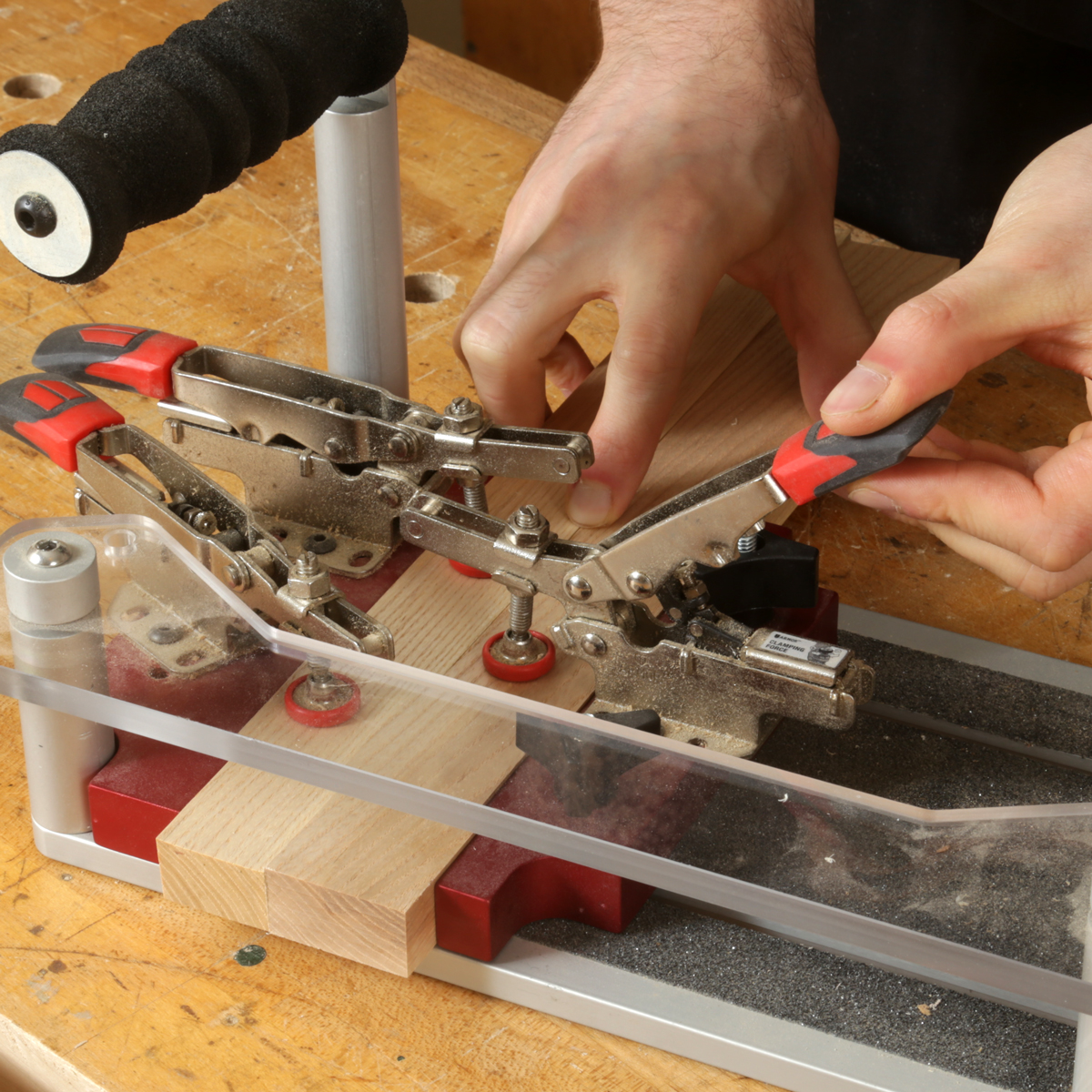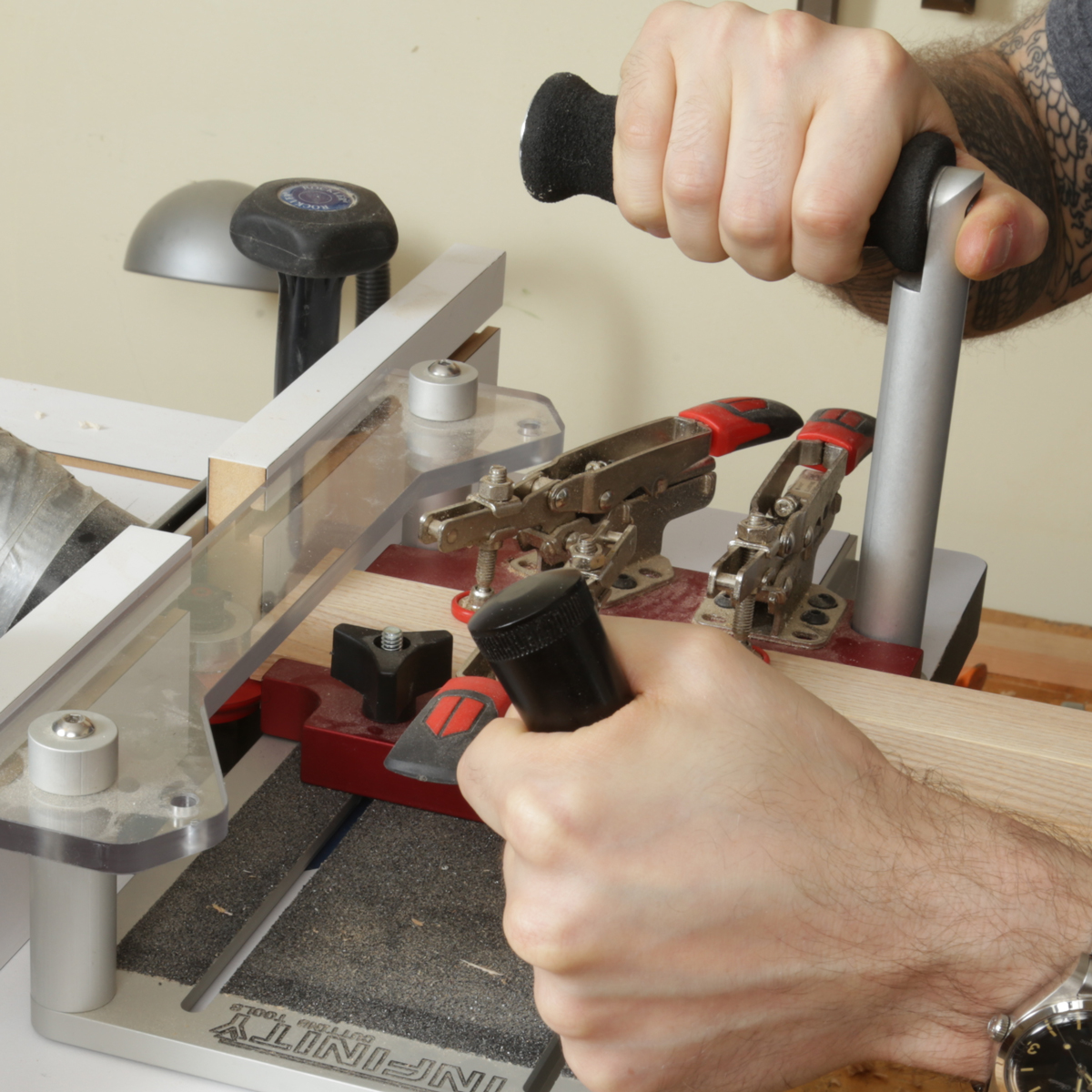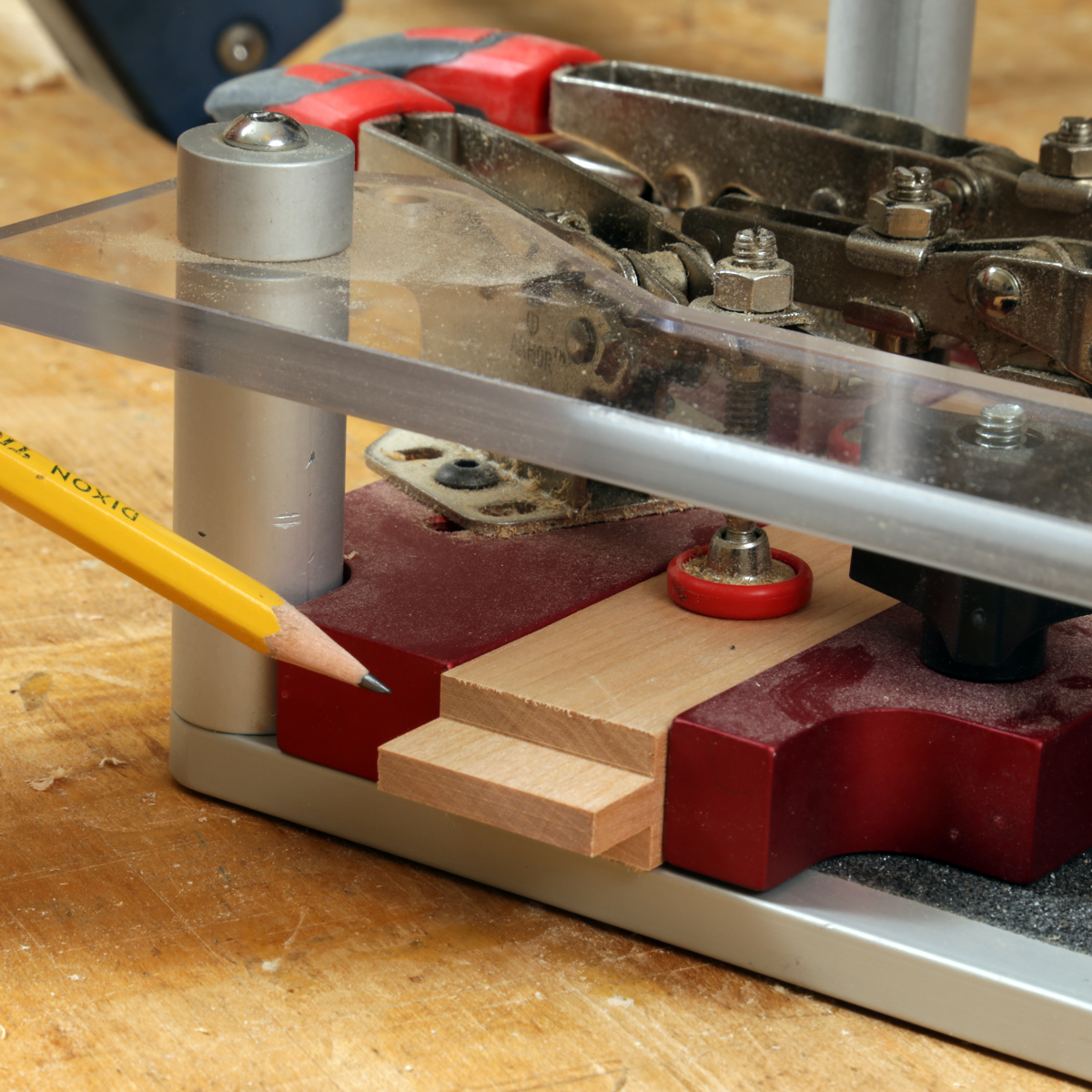
I’ve made hundreds of cope-and-stick cabinet doors. The cope cut is tricky, partly because the cut is cross-grain, but more so because the ends of the rails are often only 2 in. to 3 in. wide. Things can go wrong when you are supporting the rails while passing their short ends across the router bit, because the workpiece can tip into the opening in the fence, ruining the workpiece and bringing your hands quickly and dangerously toward the bit. The solution is to hold the rails securely on a sled with your hands a safe distance away.
Infinity has two new sleds that do just this, the COP-200 and the COP-201. The first uses standard toggle clamps, and the second self-adjusting toggle clamps. I tested the 201, which worked great on my router table. With a 3⁄8-in.-thick anodized aluminum base plate and 3⁄4-in.-thick red aluminum support blocks, the unit is well engineered and weighs in at almost 8 lb. Its heft is key to minimizing chatter. The sled has two handles, and three steel toggle clamps that hold your backer block and workpiece firmly against the sled—two clamps on the fixed support block, and one on the movable block.
A 3⁄8-in.-thick clear polycarbonate visor is the reference edge for the sled. It extends beyond the base and rides against the router table fence. This means the base itself is never against the fence or close to the bit. The visor has two sets of mounting holes, allowing you to set it up for deeper or shallower cuts.
Cope and stick are cut at the router table, but this sled works well at the tablesaw too, where you can put it to use for other joinery.
The fit and finish of the Infinity COP-201 parts are very clean and precise, and assembly was a breeze. One issue is the small, unwanted play in the visor mounting holes since the edge of the visor needs to be square to the rear base block. It’s an easy, one-time fix though, with a squared workpiece in the sled whenever you move the visor.
Infinity sells a steel miter bar ($20) to use the sled in a miter slot. Optional setup blocks ($10) help you dial in the bit height while accounting for the thickness of the sled’s base.
—Tony O’Malley is a professional cabinetmaker in Emmaus, Pa.
Photos: Barry NM Dima
From Fine Woodworking #293
Fine Woodworking Recommended Products

Blum Drawer Front Adjuster Marking Template


























Log in or create an account to post a comment.
Sign up Log in